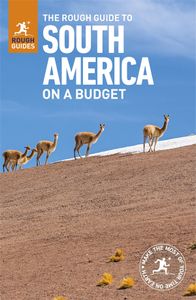Brief history of La Plata
When Buenos Aires became the federal capital in 1880, Buenos Aires Province – by far the wealthiest and most powerful in the republic – was deprived of a centre of government. A year later, the province’s newly nominated governor, Dardo Rocha, proposed that a provincial capital be created 50km southeast of the federal capital. The new city’s layout was based on an absolutely regular numbered street plan within a 5km square and was designed by the French architect Pedro Benoit. An international competition was held to choose designs for the most important public buildings, and the winning architects included Germans and Italians as well as Argentines, a mix of nationalities reflected in the city’s impressive civic architecture. Argentina’s first entirely planned city, La Plata was officially founded on November 19, 1882. Electric streetlights were installed in 1884 – the first in Latin America. Unfortunately, however, much of La Plata’s carefully conceived architectural identity was lost during the twentieth century, as anonymous modern constructions replaced many of the city’s original buildings. On a brighter note, there have been some successful attempts to preserve what’s left – above all, the old train station, now the wonderful setting for the Pasaje Dardo Rocha arts centre, notable not only for its contemporary art museum but also for its stunning interior. The 1990s saw the final completion of the city’s grandiose Neo-Gothic cathedral, over a century after its foundation stone was laid; it dominates Plaza Moreno at the very heart of the city. Another project that took decades to complete, the Estadio Único was finally inaugurated in 2011, in time for the Copa América soccer tournament won by Uruguay; the city’s new pride and joy, in addition to football and other sporting events the stadium hosts major music concerts.
The Western Pampas
In the Western Pampas towards the border with La Pampa Province, the unremittingly flat landscape is given welcome relief by the modest mountain range of Sierra de la Ventana. At the same time, the drier, more desert-like features of the pampa seca (dry pampa) herald the start of the long route south into Patagonia. Increasingly popular with domestic visitors, the mountains of the Ventana range offer enjoyable trekking near an attractive settlement – the small town of Sierra de la Ventana, whose many well-equipped cabañas are perfect as a base for exploring the area.
Sierra de la Ventana
The rugged Sierra de la Ventana mountain range, 550km southwest of Buenos Aires, is the principal attraction of southern Buenos Aires Province. Running from northeast to southwest for 100km or so, the sierras’ craggy spine forms a surprising backdrop to the serene pampas and provides the best opportunities in the province for walking and climbing. The range is named after one of its highest points, the Cerro de la Ventana, a 1136m peak pierced by a small “window” (ventana in Spanish); it’s located within the Parque Provincial Ernesto Tornquist, bisected by the RP-76, the main highway through the sierras. There are plenty of options for accommodation in the area: as well as a base camp within the park, the nearby village of Sierra de la Ventana offers the best setup for visitors; it is situated around 30km southeast of the main park entrance.
Formed principally of sedimentary rock created during the Paleozoic period, the range is notable for its intensely folded appearance and its subtle grey-blue and pink hues. Though the harsh peaks may appear barren, the area supports an amazing range of wildlife, including pumas, foxes, guanacos, armadillos, vizcachas (rabbit-like rodents appreciated for their meat) and copper iguanas. The latter are named for their distinctive colour and are one of over forty species endemic to the region.
The province’s highest peak, Cerro Tres Picos (1239m), juts from private land 6km south of Villa Ventana. It is less photogenic than Cerro de la Ventana, but its height, combined with its distance from the nearest base, makes it a more substantial hike. It is usually done as a two-day trek, overnighting in a cave on the way up. The route passes through land belonging to the Germanic Estancia Funke and you must go with a guide provided by the owners.
Top image: La Plata Cathedral and Plaza Moreno Fountain - La Plata, Buenos Aires Province, Argentina © Diego Grandi/Shutterstock





















